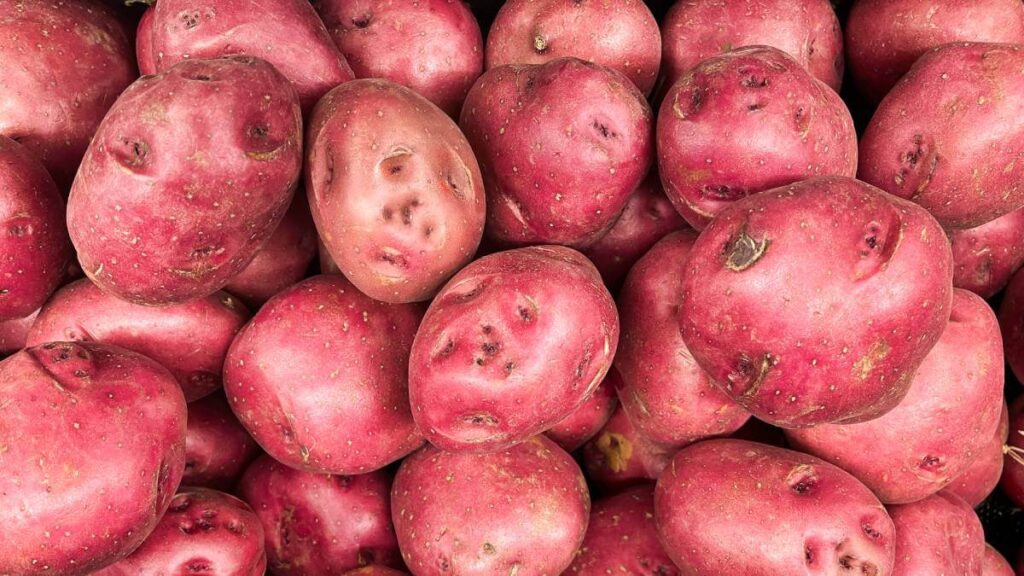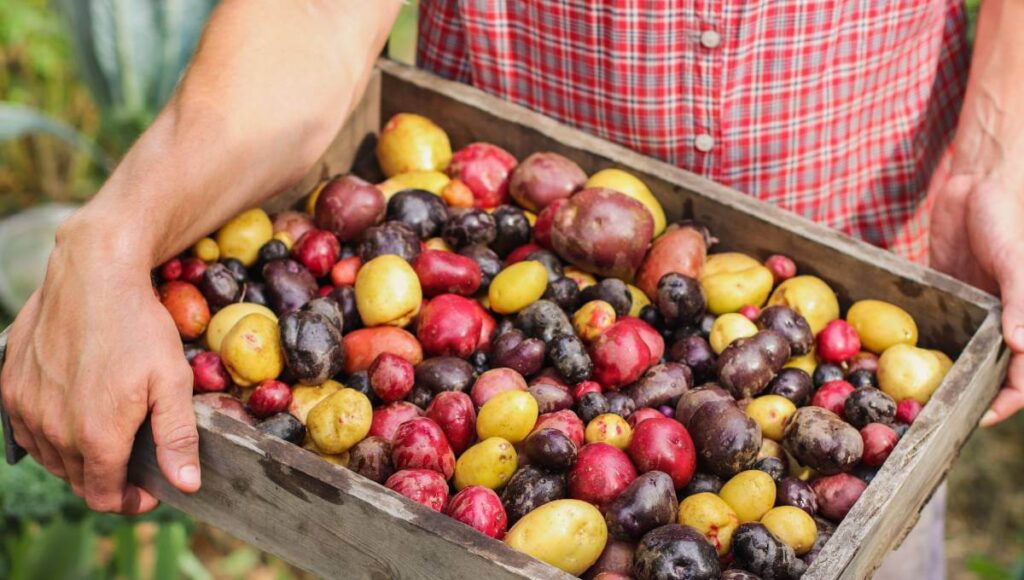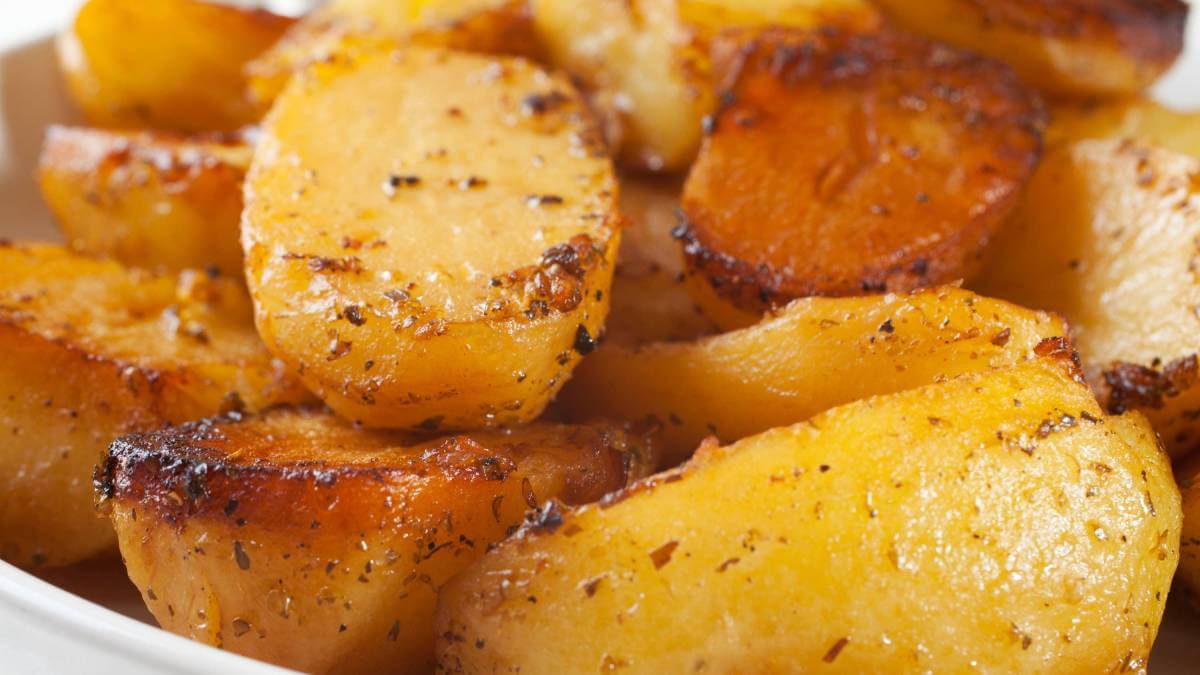They’re such as staple of our weekly menu, yet potatoes come in all shapes and sizes and some are far more suitable for particular cooking methods than others.
Some swear by King Edwards for their roasties, others prefer Maris Pipers for mashing – and there’s nothing quite like a new potato for a summer treat.
View this post on Instagram
Expert grower Graeme Green, member of Nottingham Organic Gardeners, has grown more than 70 varieties over the years on an allotment he shares with a fellow grower.
“The number of varieties you can buy has expanded over the past few years, and in garden centres you’ll sometimes find 10 different choices,” he says. You need a ‘dry’ flesh for good mash, which doesn’t go pulpy and soggy when boiled.
Mash

“Red Duke of York is a first early with a beautiful deep red skin and is fantastic for mash. Another favourite of mine for mash is Shetland Black. They’re fairly small with a beautiful white flesh, while Golden Wonder is a Scottish variety which is extremely dry but very highly regarded,” Mr Green recommends.
Roast
View this post on Instagram
“I really like Yukon Gold for roasting. It’s a big American potato, which is becoming increasingly popular over here. Arran Victory is another good one.”
Dauphinoise
View this post on Instagram
“If you make this dish with floury potatoes they can start to go soggy, absorbing a lot of the moisture from the milk or cream. My favourite is Pink Fir Apple, which has waxiness and will resist collapsing.”
All-rounders
“Picasso is a good all-rounder and a great cropper, Marfona and Desiree are also good.”
Boiled and salad potatoes
View this post on Instagram
“Two or three really stand out. Ratte, a classic French variety, is a fantastic salad potato, while Charlotte is becoming increasingly popular as a boiled and salad potato. It’s traditionally fairly waxy. Some are more waxy if you harvest them slightly earlier. If you leave them in the ground longer they will become slightly more floury.”
Chips
“Maris Piper and King Edward are very good for chips. A lot of all-rounders will make reasonable chips, but Yukon Gold stands out,” Mr Green says.
Growing tips

Chit your seed potatoes indoors to start them off, putting them in egg boxes or trays on the windowsill until strong shoots have grown out of them. Leave two or three shoots and rub the rest off once the seed potatoes are ready to plant in the ground (or in a large container).
In warm climates, plant potatoes between March-April. In cool climates, plant potatoes between July-August. Potatoes can be harvested between 90-120 days from planting.
Potatoes like a sunny spot and if you have a good amount of sunshine and the soil warms, you should be able to plant them in the ground at Easter, although cover them with straw or horticultural fleece if frost is forecast, or it will kill the foliage, which won’t kill the plant, but will set growth back, Mr Green warns.
How long will potatoes keep?
“I’ve still got some Ratte potatoes in my cellar from last year. There’s an issue called ‘dormancy’ when you keep them in a cool, dark place. It’s not the end of the world if they start to sprout, as you can just take off the sprouts and they’ll be okay.
“Another of my favourites, Pink Fir Apple is a late main crop, but I’ve still got quite a lot of those in the cellar. They are a top-quality salad and boiling potato. Because they have really good dormancy, you can store for months.
“With summer salad potatoes (first earlies), you want to eat them as soon as you’ve picked them to give you that ‘wow’ flavour, but with main crops, storing them doesn’t matter that much.”
Other growing tips
View this post on Instagram
Grow a variety of potatoes during the year – first earlies, second earlies and main crops – as some are more resistant to weather extremes than others, Mr Green recommends. “If you have good growing conditions early in the year you might get a good crop of first earlies, but your main crop might not do as well if there’s a big drought,” he says.
“Spread your growing across the calendar year to give you a better chance of one or two varieties being able to capitalise on good conditions. Different potatoes cope differently with drought and with excess rainfall, blight and diseases.”
Good drainage is important
Adding organic matter to the soil is important to aid drainage and enrich the earth, as potatoes are hungry feeders. Impoverished soil will give you a crop but they will be small potatoes, Mr Green warns.
“If you look after the soil, the soil will look after the potatoes, the potatoes will be stronger and will withstand different weather conditions and pests.”
Storage

Only store really healthy looking potatoes, not ones with blemishes or slug damage. Dry them off after harvesting so the skin can harden a bit and place them in a cool, dark place, in a breathable container, so not polythene bags.
Mr Green says a cardboard box is fine, but put newspaper or hessian between layers and check them on a regular basis. If any show signs of rot or disease, remove them immediately.
What’s your favourite potato and why? Why not share your opinion in the comments section below?
Also read: Sausage Hot Pot with Baked Potatoes
– With Hannah Stephenson


Well once again Your Life Choices have published an article with references from people who don’t live in Australia & about things that aren’t here, I for one have never heard of any of the potatoes mentioned in this article, I do wish you would get your act together when doing articles like this & only talk about things available here in Australia & forget about taking stuff from Instagram or Tik Tok.